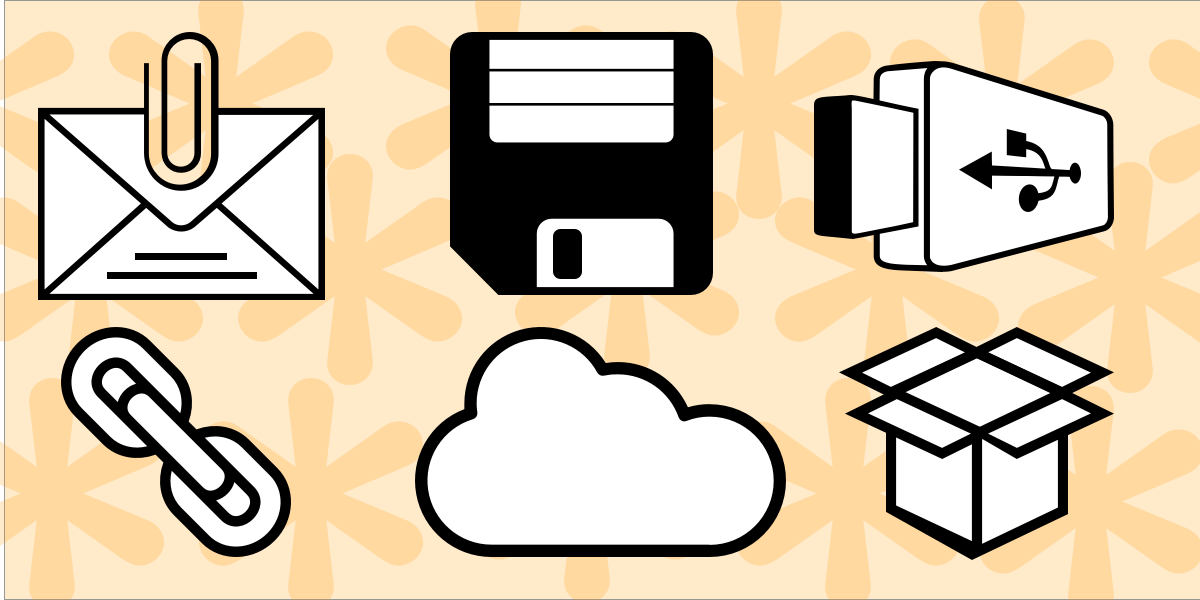I’ve got a podcast that will be 10 years old this coming January! The majority of those episodes have several visitors (plus me and Dave ). In spite of elegant modern-day alternatives for tape-recording podcasts with visitors, like Riverside.fm or Zencastr l where visitors do not have to fret about tape-recording their own audio, we have not made the leap to one of those.
We have the visitors tape-record their own audio in your area (generally Quicktime Player or Windows Voice Recorder) since that method our editor can take advantage of the modifying procedure. At the end of the program, our visitor has a file that is ~ 100MB that they require to send out over to us.
How that handoff takes place isn’t constantly entirely apparent. Generally we do not share a Slack with our visitors, however when we do, that works for sharing big files like that. Even a Nitro-boosted Discord will not take a file that huge . I ‘d state 70% of the time, our visitors chuck the file into their Dropbox and produce a sharing link for us to download it. From there, it’s most likely Google Drive 20% of the time, and the last 10% is some random thing.
That last 10% is things like publishing the file to a web server or file storage service the visitor controls and they connect us as much as the file from there. If we were smarter, we ‘d most likely utilize “File Request” links on Dropbox or Box .
I normally state something like, Send us that file nevertheless you like to send out big files, since I do not wish to be too authoritative about what service somebody utilizes. If somebody has a specific hostility to some particular tech or business, you never ever understand. Due to the fact that it was suggested for one-off file sending out and I discover individuals normally like and trust Mozilla, I would constantly discuss Firefox Send. Unfortunately, Firefox Send closed down .
Unfortunately, some violent users were starting to utilize Firefox Send to deliver malware and conduct phishing attacks. When this issue was reported, we stopped the service. Please see the Mozilla Blog for more information on why this service was terminated.
I think it’s accountable to attempt to close down bad habits, however obviously it was utilized for bad habits. Dickwads utilize any and every service on the whole web for bad habits. The genuine response, most likely, is that it was simply a little random side task that didn’t make any cash and they didn’t seem like investing the time and cash into repairing it. Fair enough, however naturally that constantly costs you trust points. What else is on the slicing block?
I encountered Wormhole recently which appears like a direct, if not much better, replacement. It utilizes end-to-end encrypted and has some great UX touches, like getting a share link prior to the upload is total. It does not state anything about how they mean to spend for it and support it long-lasting, however I ‘d think the expense is rather very little as they just host the apply for 24 hours. They likewise do not state if they mean to avoid bad habits or if it’s simply a free-for-all. Even with all the file encryption and whatnot, I would envision if a website like Google or Twitter discovered that lots of wormhole.app URLs had malware on them, they ‘d be blacklisted. That would not stop individuals from utilizing it however it definitely stops individuals from discovering it too. I did speak with Feross on this, and they have concepts to combat bad habits if it concerns that.
The thing I’m the most shocked by is that we do not get more e-mails where the e-mail service itself simply hosts the file. That may sound ridiculous, as e-mail is well-known for declining large file accessories, however that has actually altered throughout the years with a few of the huge gamers. When you choose a file that’s bigger than 25MB in Gmail , it’ll provide to publish it to Google Drive and immediately share it with the individual you’re sending out the e-mail to. iCloud does mostly the very same thing with Mail Drop .
Me, I utilize Dropbox a fair bit, however hardly ever for sharing one-off files. In some cases I’ll even utilize an individual Amazon S3 container if I desire to make sure I have a copy in all time. Primarily I’ll simply submit it to Droplr , which I’ve utilized for ages simply for this kind of thing.
The post Sending Large Files appeared initially on CSS-Tricks .
You can support CSS-Tricks by being an MVP Supporter .
.
Read more: css-tricks.com
